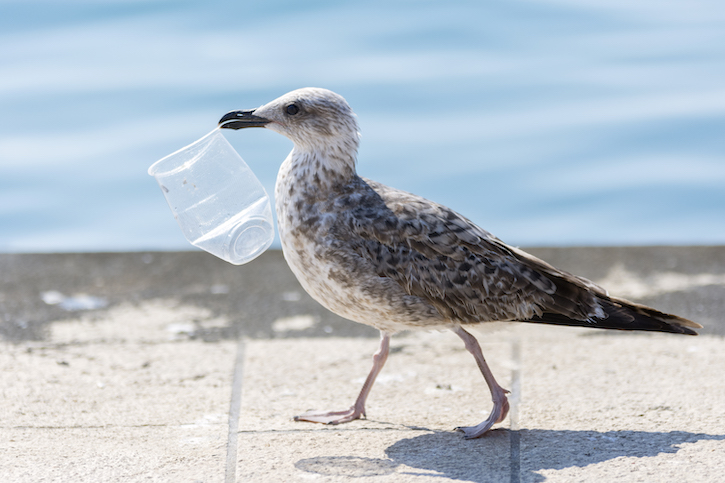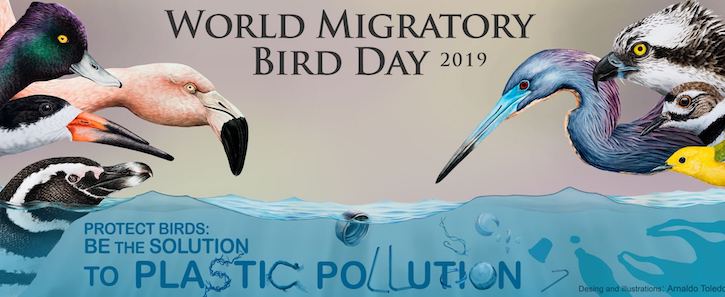Every year, one million waterbirds migrate from wintering grounds in the southern hemisphere to breeding grounds in the Arctic. Nearly all rely on the intertidal mudflats of China’s east coast to rest and refuel as they make these incredible journeys. These birds face many threats, not only from natural predators but increasingly from human-related activity.
The Paulson Institute has been working closely with the Chinese government, academics, and NGOs to better understand the value of coastal wetlands and protect the important habitat for migratory birds. But the human-made threat of plastic pollution is still a pervasive problem, killing around a million seabirds every year through ingestion or entanglement. That’s why this year’s World Migratory Bird Day is focusing on plastic pollution.
Plastic is one of the most widely used materials in the world. One million plastic drinking bottles are purchased every minute, while up to 5 trillion single-use plastic bags are used worldwide every year. In total, half of all plastic produced is designed to be used only once and then thrown away. This is despite the fact that plastic has a lifetime of 20 to 500 years.
Of an annual production of 300 million tons, a staggering 8 million tons of plastic end up in the world’s oceans every year. Most comes from the world’s rivers, which serve as direct conduits of trash from the world’s cities to the marine environment.
How does plastic affect birds?
Sadly, having wings does not help birds escape the threat of plastic. The number of seabirds dying from the effects of plastic every year is currently 1 million and growing. Research highlights the urgency of the matter: not only are 90% of seabirds estimated to have plastic in their guts, but the proportion of seabirds ingesting plastic is on track to reach 99% by 2050.

Ingestion
Foraging behavior makes seabirds prone to ingesting plastics. Floating on the surface of the water and covered in algae, single-use plastics including bags, drinking straws and bottles can easily be mistaken for prey, by both shape and by smell. Unwittingly, birds feed plastic to their chicks, which are even more vulnerable due to their underdeveloped organs.
In cases of ingestion, the damage caused by plastic depends on its shape. Sharp plastic particles cause immediate death by piercing internal organs. But mostly, plastic consumption leads to a chronic feeling of hunger and starvation as it gives the sensation of having a full stomach without any nutritional value. The toxicity of chemicals coating plastics is an additional threat.
Entanglement
Layers of plastic covering wetlands lead to many cases of entanglement and trapping. Abandoned fishing gear is one of the most common causes, leading to a phenomenon called ‘ghost fishing.’ Caught birds are either injured and pick up infections or end up drowning. Often, trapped birds are limited in their movements and become easy prey for other animals.
What can be done to prevent the problem?
Studies show that local projects to manage of plastic waste produce results in a short period of time. Therefore, common sense and awareness can be important in helping to curb the giant tide of plastic. The international community must take urgent action to mitigate unnecessary injuries and mortality of migratory birds due to plastic pollution.
World Migratory Bird Day 2019 is a unique chance to join efforts to address the serious problem of plastic pollution and to highlight its negative effects on migratory birds. Let’s unite our voices to address this rapidly growing environmental concern!
What can you do to fight plastic pollution?
Reduce, reuse and recycle: Limit your use of plastic materials and replace them with eco-friendly alternatives; use and dispose of plastics sustainably.
Clean up: Join clean-up activities in your area, at beaches or along rivers.
Spread the word: Support local and global action against excessive, unnecessary use and detrimental disposal of plastic; ask businesses what they are doing to tackle plastic pollution.





